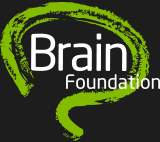Description
Benign essential blepharospasm (BEB) is a progressive neurological disorder characterized by involuntary muscle contractions and spasms of the eyelid muscles. It is not life-threatening It is a form of dystonia, a movement disorder in which sustained muscle contractions cause twitching and repetitive movements.
BEB begins gradually with occasional eye blinking and/or irritation. Other symptoms may include involuntary winking or squinting of one or both eyes, increasing difficulty in keeping the eyes open, and light sensitivity. Generally, the spasms occur during the day, disappear in sleep, and reappear after waking. As the condition progresses, the spasms may intensify, forcing the eyelids to remain closed for long periods of time, and thereby causing substantial visual disturbance or functional blindness. It is important to note that the blindness is caused solely by the uncontrollable closing of the eyelids and not by a dysfunction of the eyes.
Blepharospasm should not be confused with: Ptosis – drooping of the eyelids caused by weakness or paralysis of a levator muscle of the upper eyelid, Blepharitis – an inflammatory condition of the lids due to infection or allergies or Hemifacial spasm – a non-dystonic condition involving various muscles on one side of the face, often including the eyelid, and caused by irritation of the facial nerve.
BEB occurs in both men and women, although it is especially common in middle-aged and elderly women.
Treatment
In most cases of BEB the treatment of choice is botulinum toxin injections, which relax the muscles and stop the spasms. Other treatment options include medications (drug therapy) or surgery.
Stress makes all movement disorders, including blepharospasm, worse. Some patients may benefit from a course of stress management from an occupational therapist. Support from family and friends is also important.
Prognosis
With botulinum toxin treatment most individuals with BEB have substantial relief of symptoms. Although some may experience side effects such as drooping eyelids, blurred or double vision, and eye dryness, these side effects are usually only temporary
Further Information and Support
Click here for the latest Australian research papers on Blepharospasm.
Vision Australia
4 Mitchell St, Enfield NSW 2136
Tel 1300 84 74 66
www.visionaustralia.org
Blepharospasm Australia – Support Group
blepharospasmaustralia.org.au
Benign Essential Blepharospasm Research Foundation (BEBRF)
www.blepharospasm.org
Reviewed by: Dr Victor Fung, MB BS (Hons) PhD FRACP, Director, Movement Disorders Unit, Department of Neurology, Westmead Hospital, Westmead.
DISCLAIMER: The information provided is designed to support, not replace, the relationship that exists between a patient / site visitor and his / her existing health care professionals.



 The Brain Foundation is the largest, independent funder of brain and spinal injury research in Australia. We believe research is the pathway to recovery.
The Brain Foundation is the largest, independent funder of brain and spinal injury research in Australia. We believe research is the pathway to recovery.